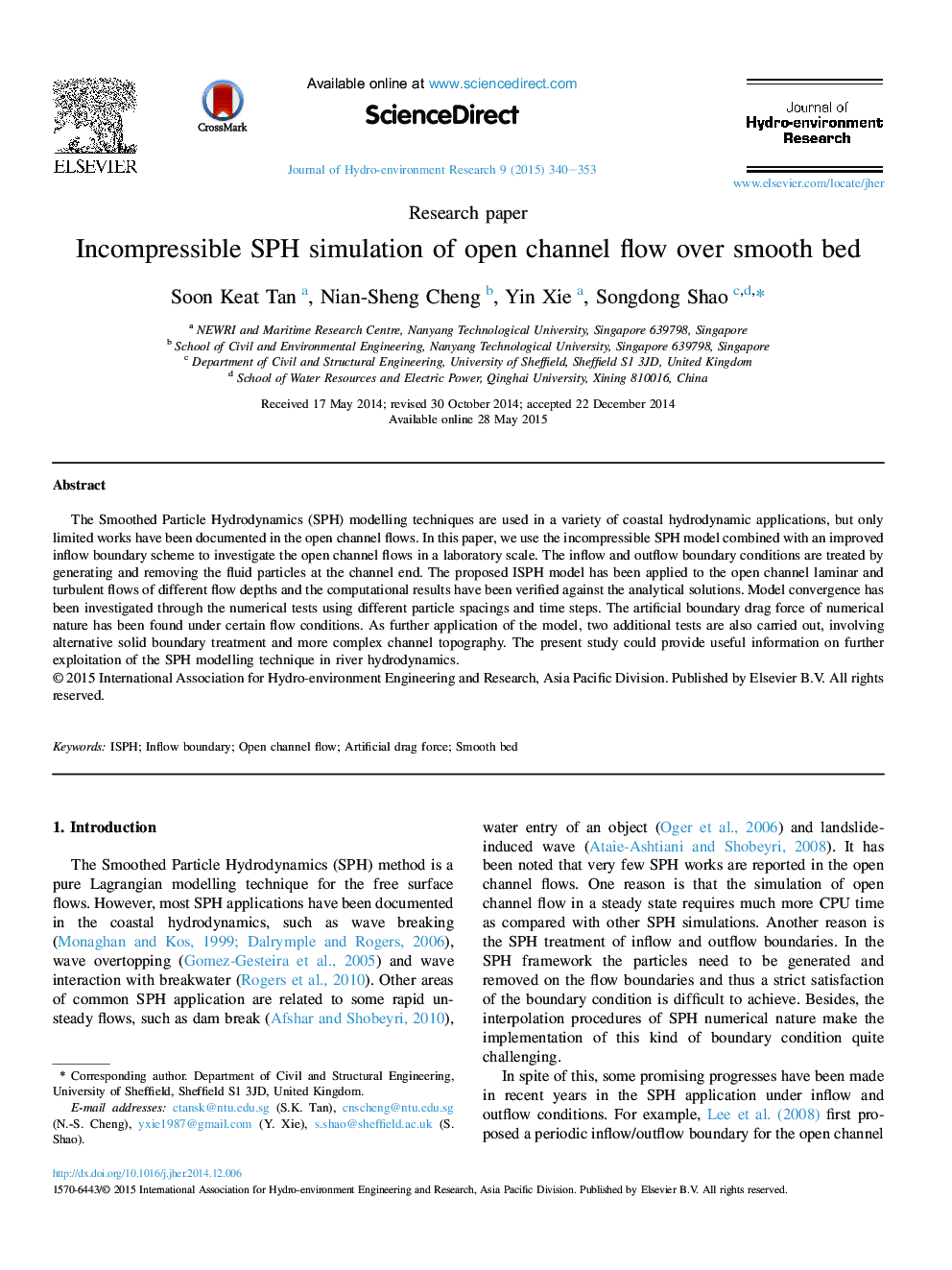| Article ID | Journal | Published Year | Pages | File Type |
|---|---|---|---|---|
| 4493638 | Journal of Hydro-environment Research | 2015 | 14 Pages |
•An ISPH inflow boundary model has been developed.•Velocity profiles have been verified for both the laminar and turbulent flows.•Artificial boundary drag forces have been found under the smooth bed conditions.•Higher spatial resolution and mirroring particle technique have been used to reduce the boundary drag effect.•More complex open channel flows have been simulated and validated by the experimental data.
The Smoothed Particle Hydrodynamics (SPH) modelling techniques are used in a variety of coastal hydrodynamic applications, but only limited works have been documented in the open channel flows. In this paper, we use the incompressible SPH model combined with an improved inflow boundary scheme to investigate the open channel flows in a laboratory scale. The inflow and outflow boundary conditions are treated by generating and removing the fluid particles at the channel end. The proposed ISPH model has been applied to the open channel laminar and turbulent flows of different flow depths and the computational results have been verified against the analytical solutions. Model convergence has been investigated through the numerical tests using different particle spacings and time steps. The artificial boundary drag force of numerical nature has been found under certain flow conditions. As further application of the model, two additional tests are also carried out, involving alternative solid boundary treatment and more complex channel topography. The present study could provide useful information on further exploitation of the SPH modelling technique in river hydrodynamics.
